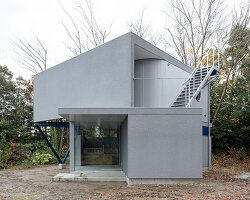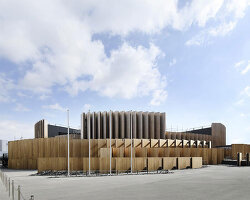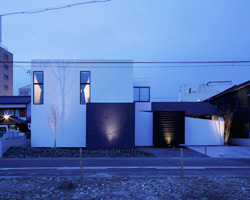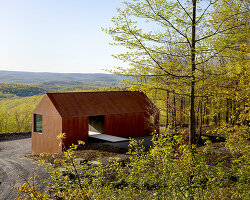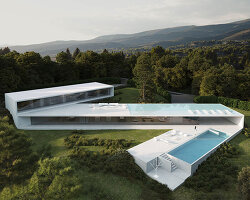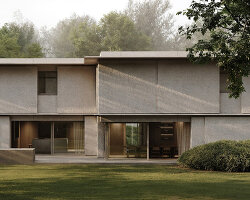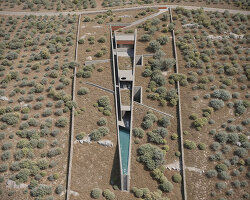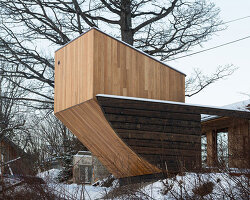designed for a french artist and his wife, CUBO design architect has completed the T3 house in kamakura, japan. with an incredible location overlooking a nearby beach and a distant mount fuji, the residence blends indoor and outdoor space, and traditional japanese architecture with contemporary design.
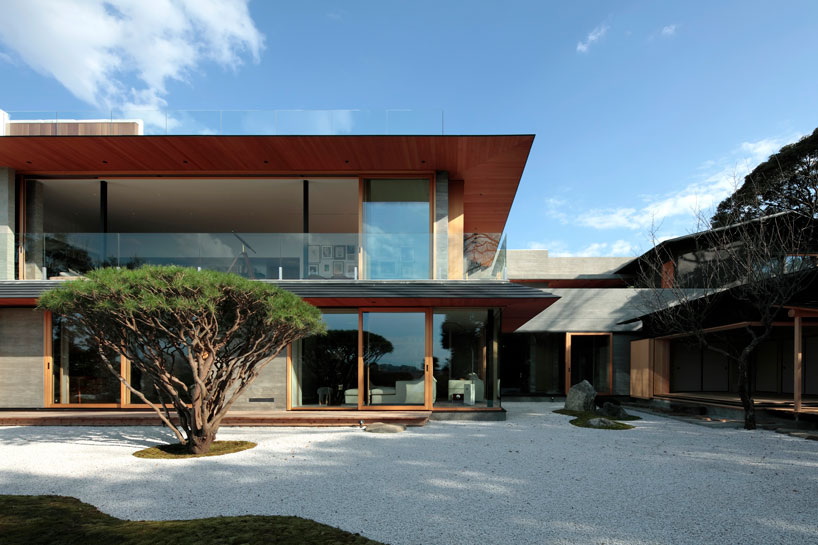
all images © koichi torimura
living between japan, new york, and paris, the clients were looking for a permanent residence in kamakura. the brief for CUBO was to design a cozy house that integrated traditional japanese elements while providing plenty of space for overseas guests. the resulting scheme therefore includes a guest house with two guest rooms and a japanese-style room. details of japanese architecture have have also been delicately woven into the home, creating a ‘modern japanese-style architecture’.
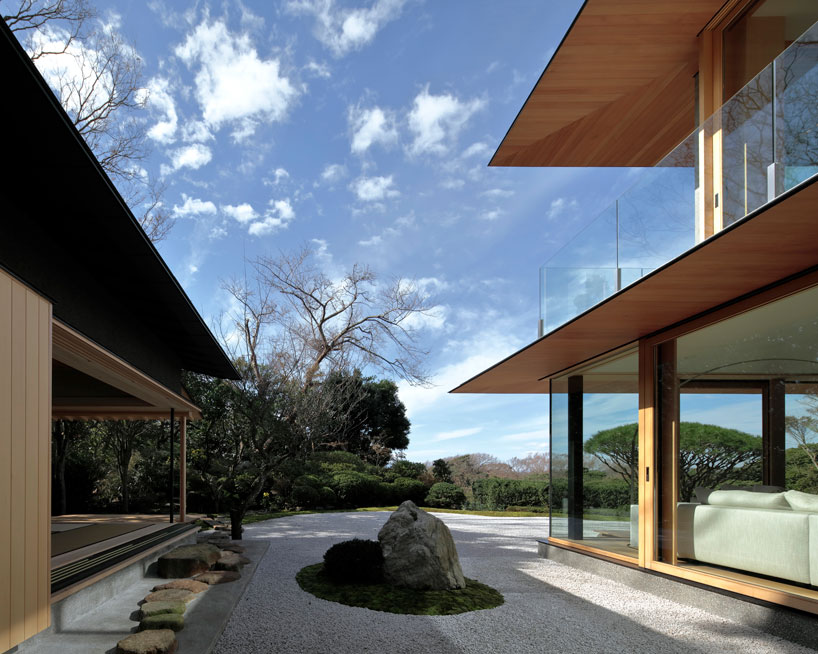
the typical shape of eaves and roofs seen in sukiya-zukuri (a style of residential japanese architecture) boasts a particular beauty. the eaves are both sharp and delicate, and continuous in form. in essence, japanese architecture embodies a powerful yet delicate design, all the while making full use of the construction material. following these ideas, CUBO created a minimal design, allowing the materiality to take center stage throughout the interiors. alongside swathes of natural timber, various ancient japanese materials, such as granite and japanese paper, have been applied.
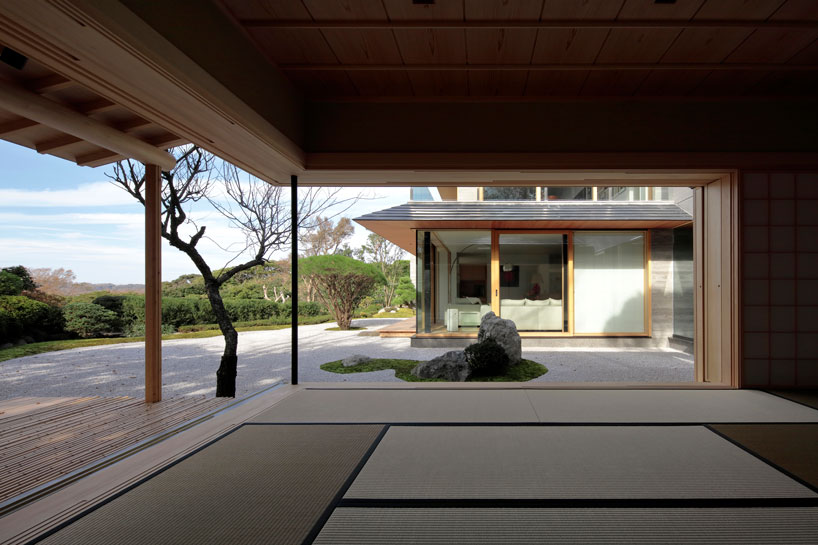
positioned back from the road for privacy, the house opens up toward the landscape. the spaces are designed to connect to the external environment through semi-open spaces and large elements of glazing, ensuring the residents and their guests can fully appreciate the magnificent nature of the site.


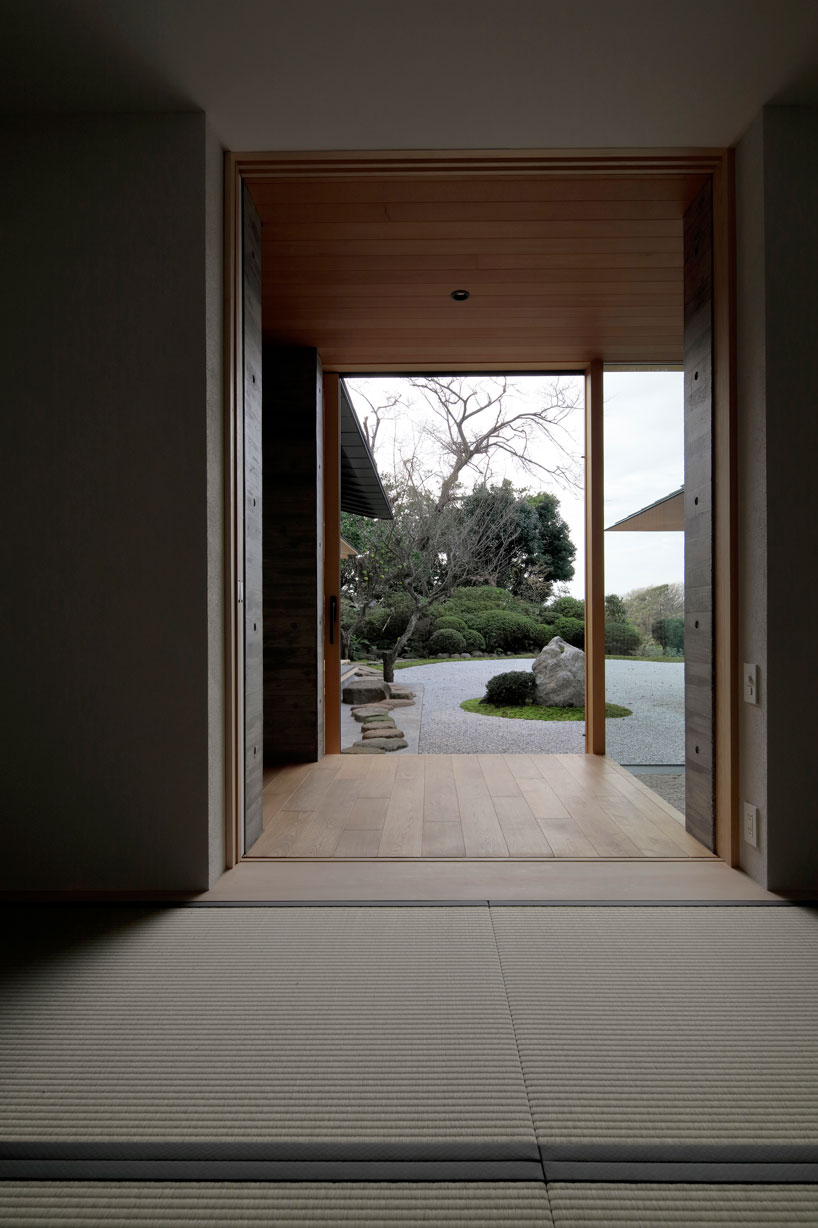
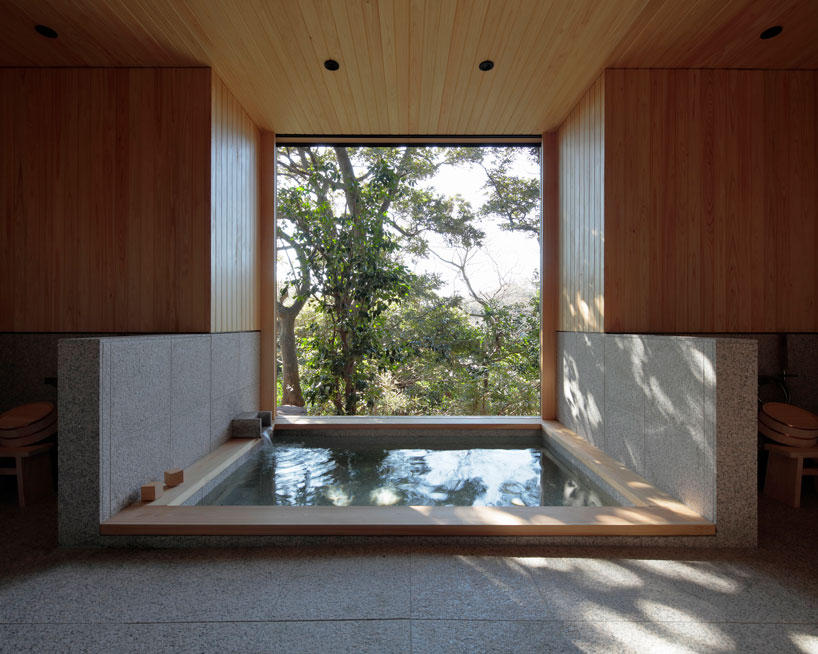
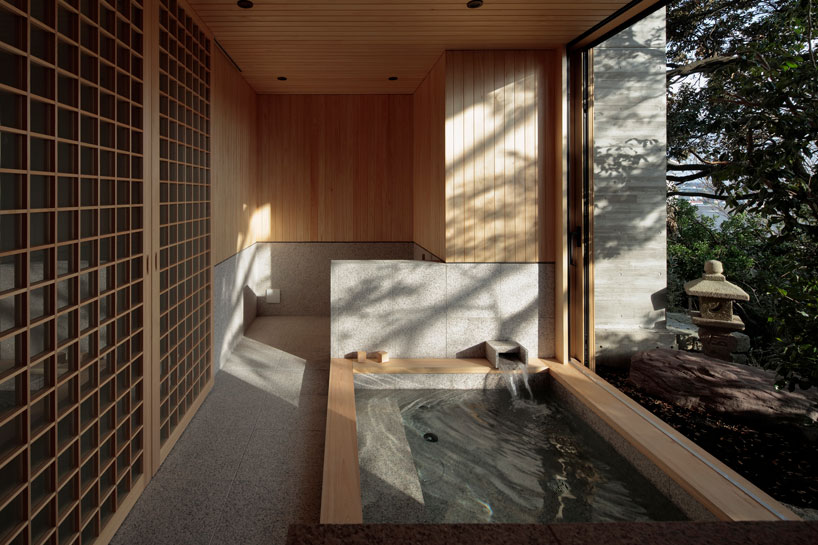

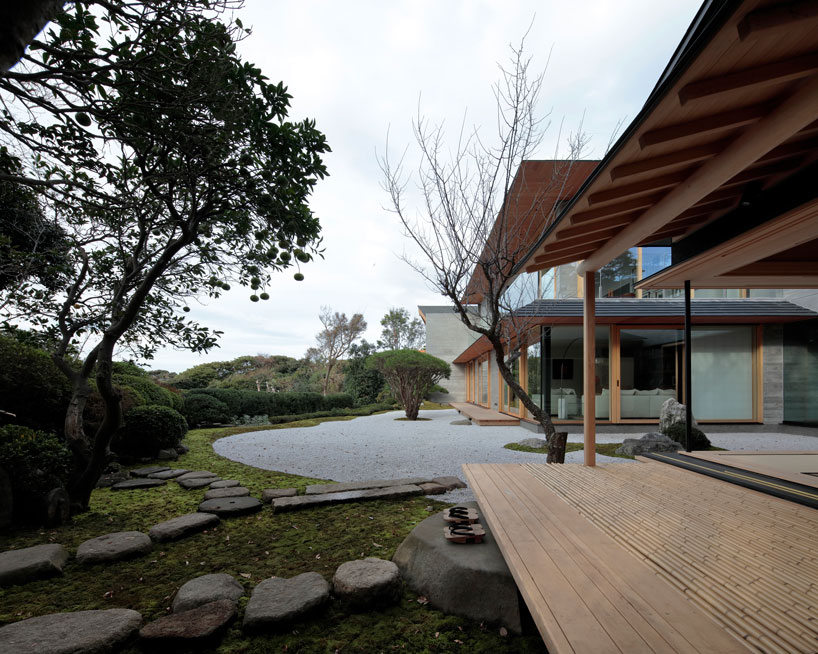
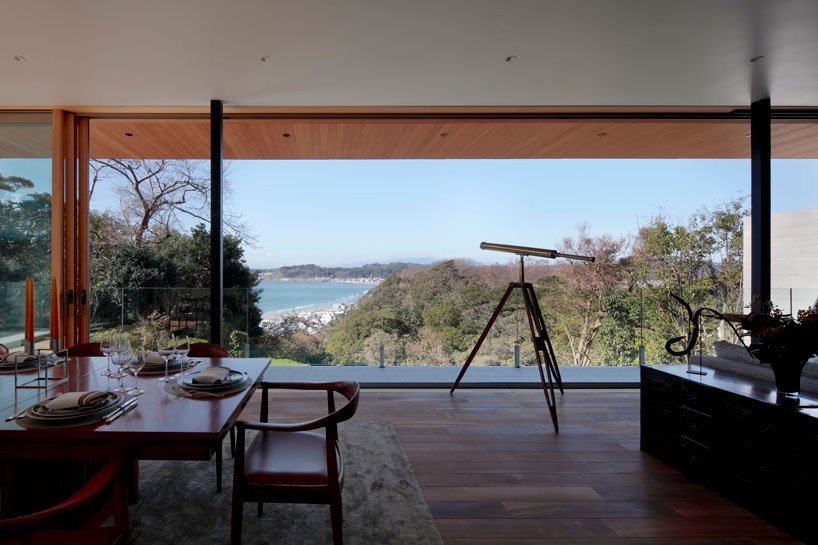
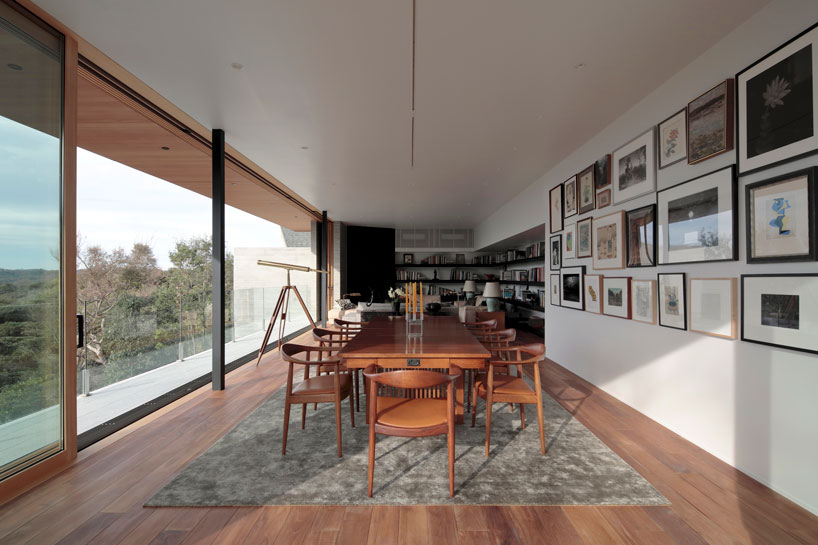
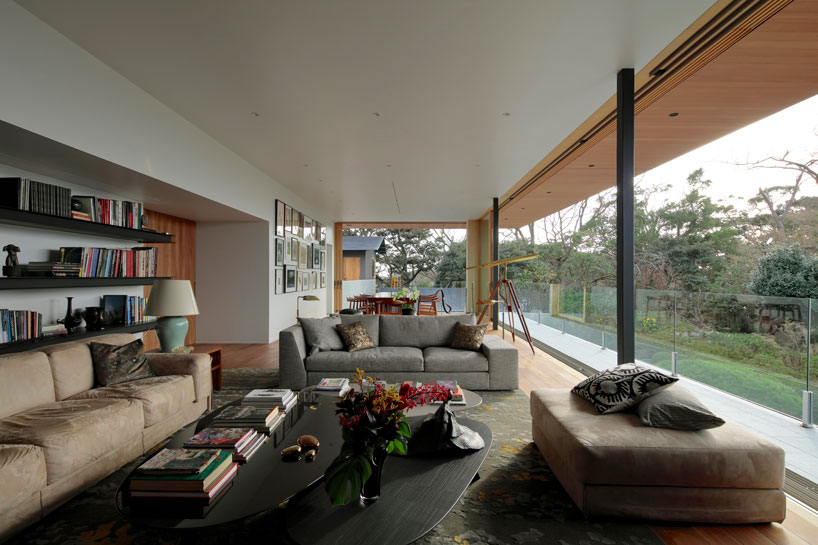
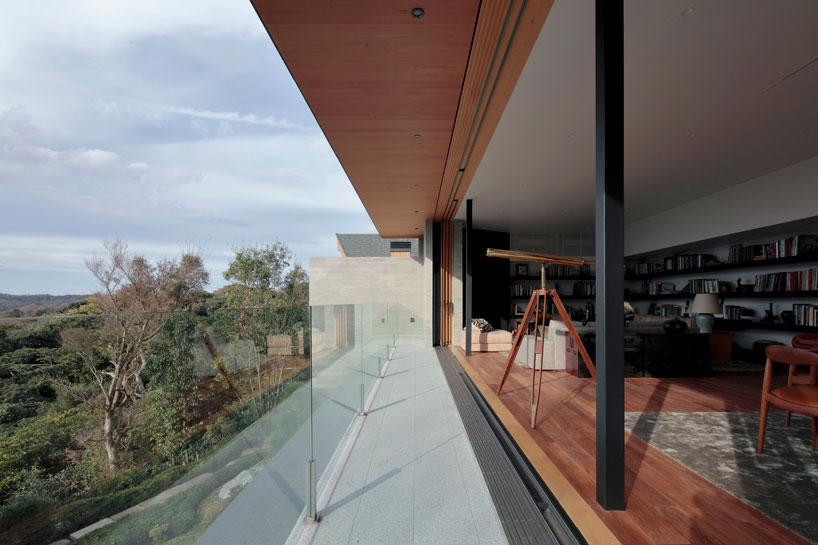
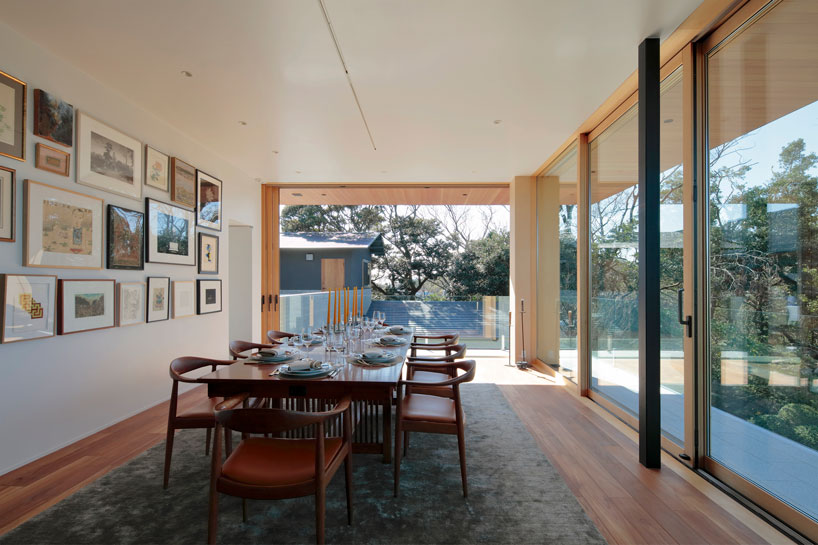













project info:
project name: T3 house
architect: CUBO design architect
location: kamakura city, kanagawa prefecture, japan
site area: 7562.83 ft2 (702.61 m2)
building area: 2951 ft2 (274.16 m2)
total floor area: 5454.93 ft2 (506.78 m2)
construction: daido industry co., ltd. shonan main store
period: may 2018 – september 2019
photography: koichi torimura



